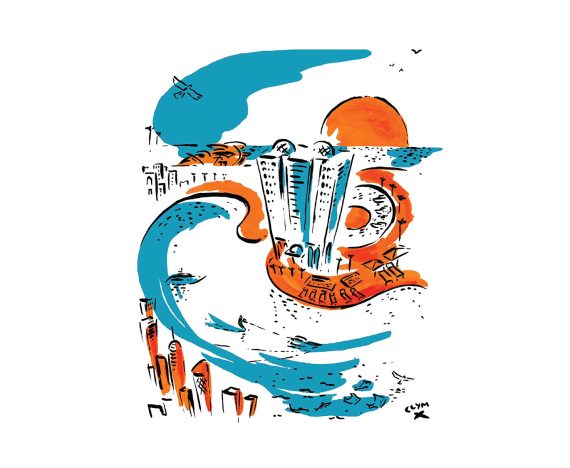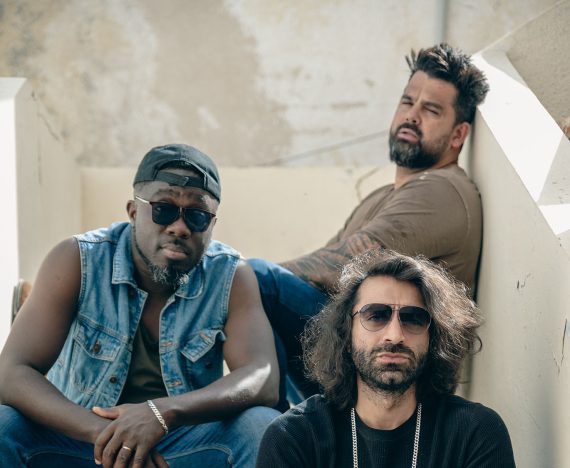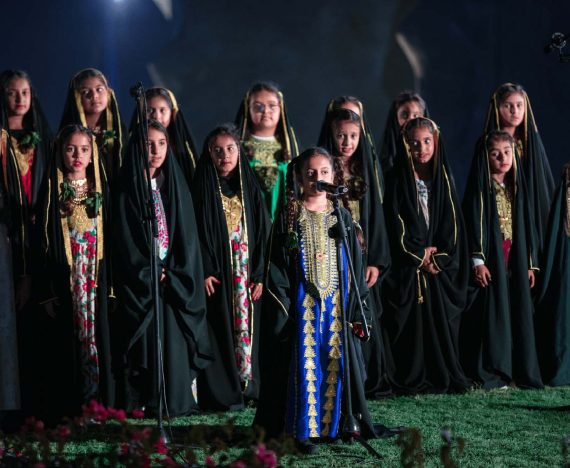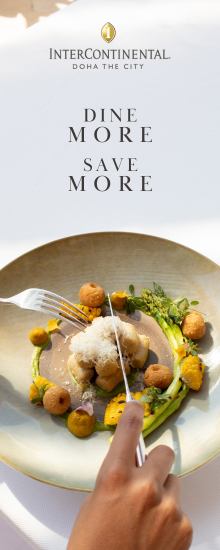FROM REFUGEE TO RENOWNED ARTIST
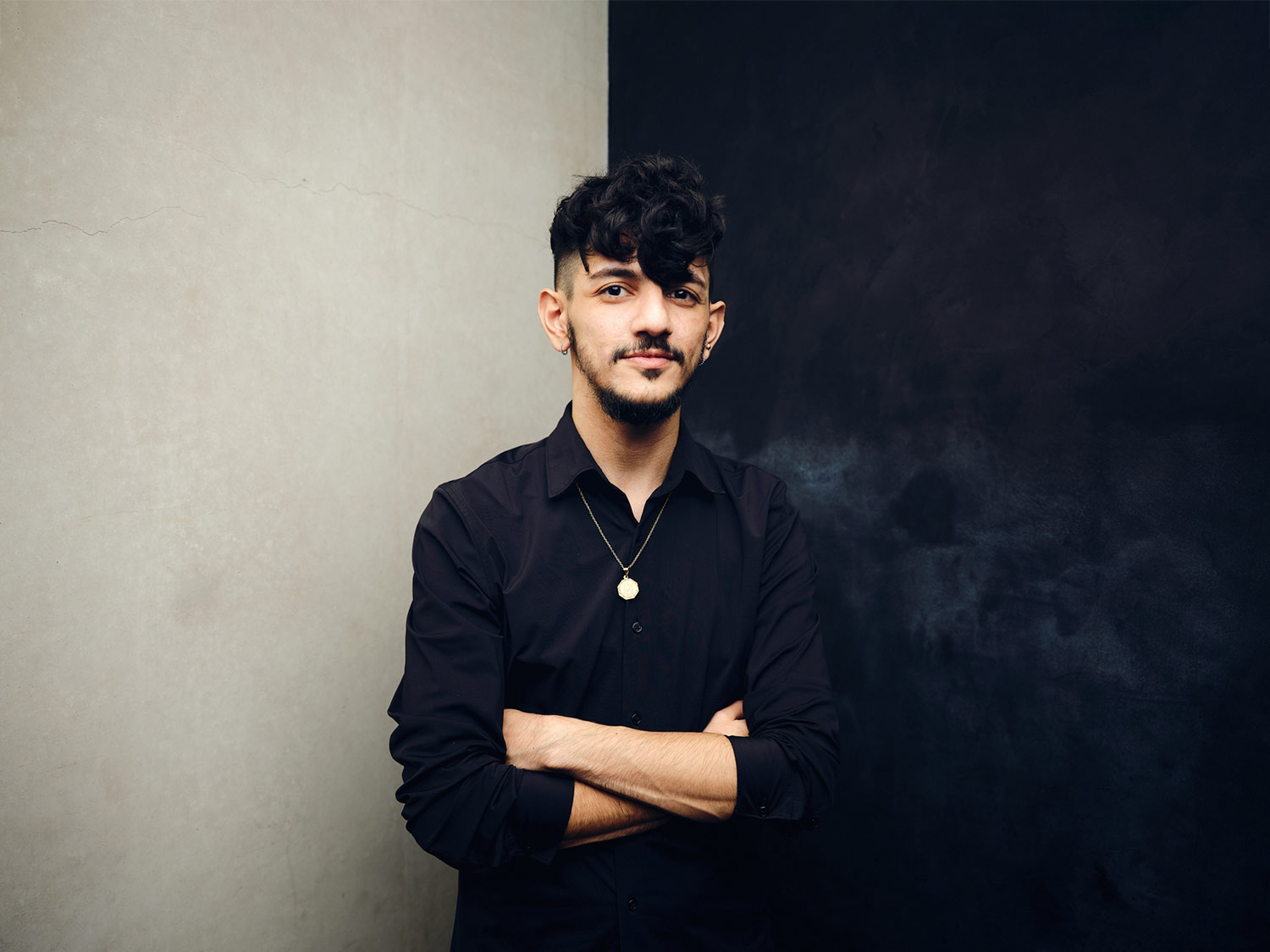
Diyar Al Asadi discusses fleeing the war in Iraq, his big break at 13 and how his painting of the country’s Emir led him to becoming a resident in Doha with FACT’s Homara Choudhary.
THE JOURNEY
Diyar’s love for art began when he was still in primary school at the age of seven. Born in Baghdad, he and his family were forced to leave Iraq during the war in 2004 and flee to Egypt where they lived for five years. Diyar described the moment he first began painting:
“I was at school and we were asked to volunteer to paint a mural, I immediately put my hand up. It really started from there. When the war began, we escaped to Egypt, but we soon ran out of money. My dad wasn’t well and my mum has a heart condition so she couldn’t work.”
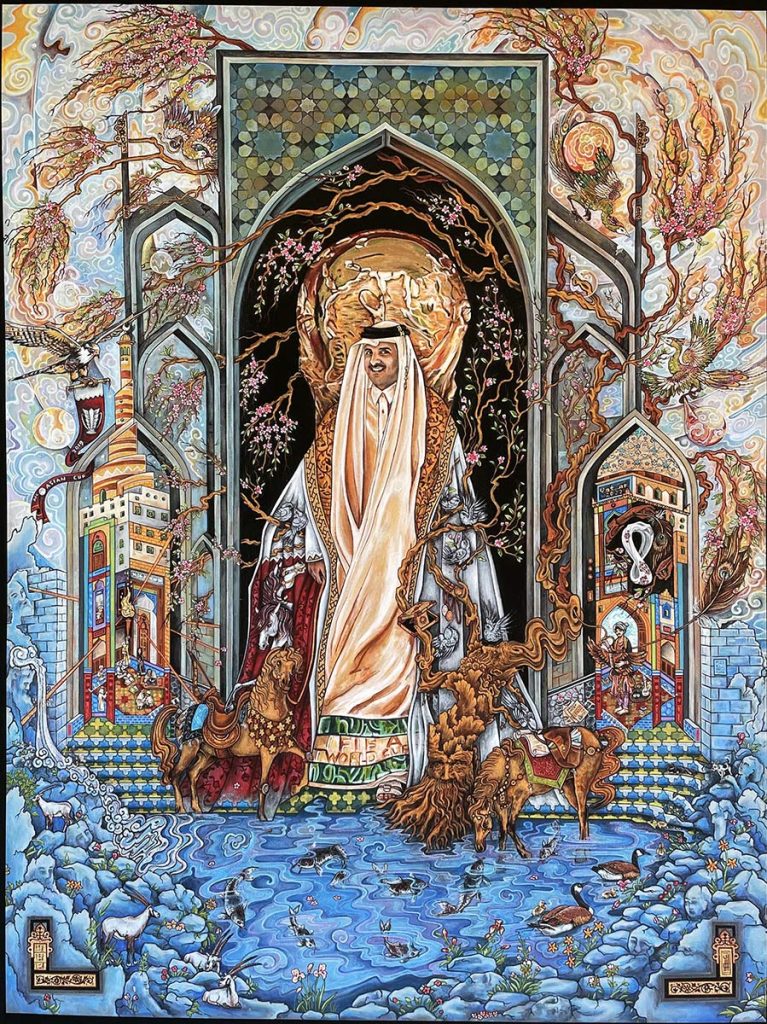
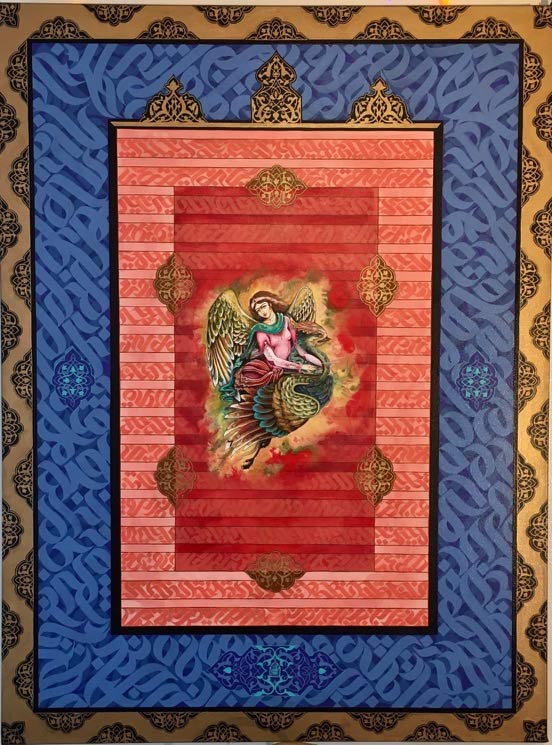
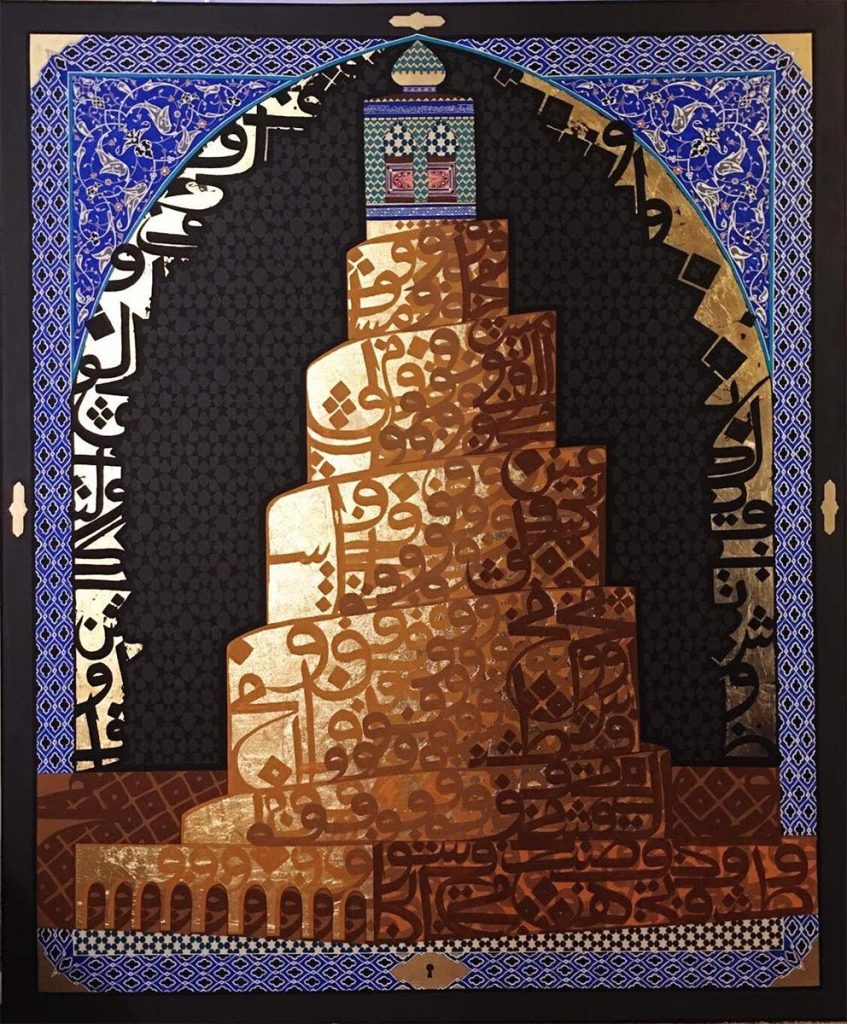
Realising his family had no income or any means to support themselves Diyar, the eldest of three, began selling his art to take care of his family. He was 12 years old.
“I have two younger sisters and one brother so I decided to do art for a living,” he explained. “My mum would help me to sell my work. People would ask her who the painter was? They wanted to help Iraqi artists.”
Diyar’s talent didn’t go unnoticed. He got his big break at 13, when he was sponsored by Townhouse Gallery in Cairo. It was then that he began to study art full-time. A Russian teacher taught him how to use acrylic and water colours: “She saw me, in her words, as a ‘shining star.’ She was really tough on me and even now I am still a pupil of art and continue to study it, to grow and help with my ideas. I don’t have one style of painting.”
The 29-year-old describes his work as modern Islamic art. After leaving Egypt, Diyar spent three years in Jordan where his teacher and mentor taught him everything he knows about Islamic art: “I was in high school during the day and, in the evenings, I would go to art school, where I learned a lot about Islamic art and decorative Islamic art. My Iranian teacher taught me everything about Islamic art.” From Amman, Diyar and his family were moved by the United Nations to the US, where he won not one but two scholarships. One was to the prestigious New York University and the other was to the Art League of New York: “I decided to go to the Art League, where I studied for three years. I learned so much there about different styles, techniques, mixing colours and balance. It was an invaluable experience,” he says.
Diyar said that was when he decided he wanted to paint more about modern day life and less about the pain of war: “I wanted to paint about healing and love. Initially my work had been more abstract. I wanted to make Islamic art more relatable, not just something you see in museums. When I moved to the US, I decided I wanted it to be more modern and for it to relate to Arabs and to where Islam originated from.”
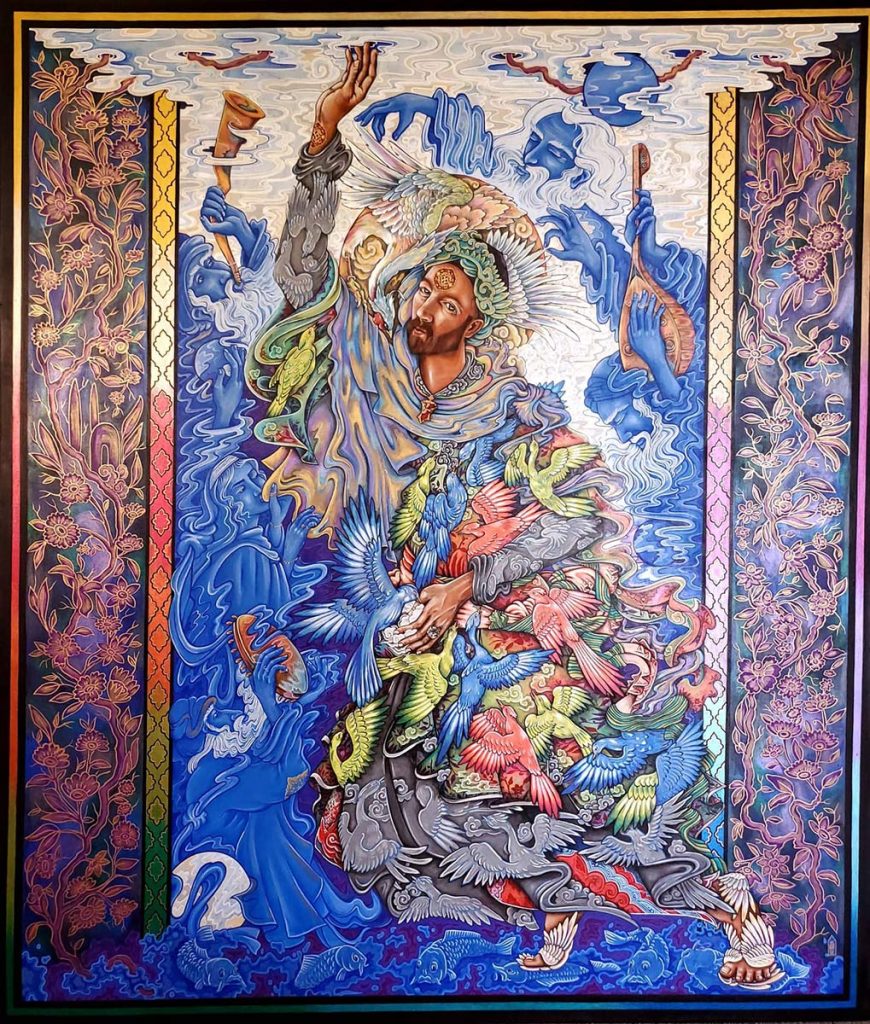
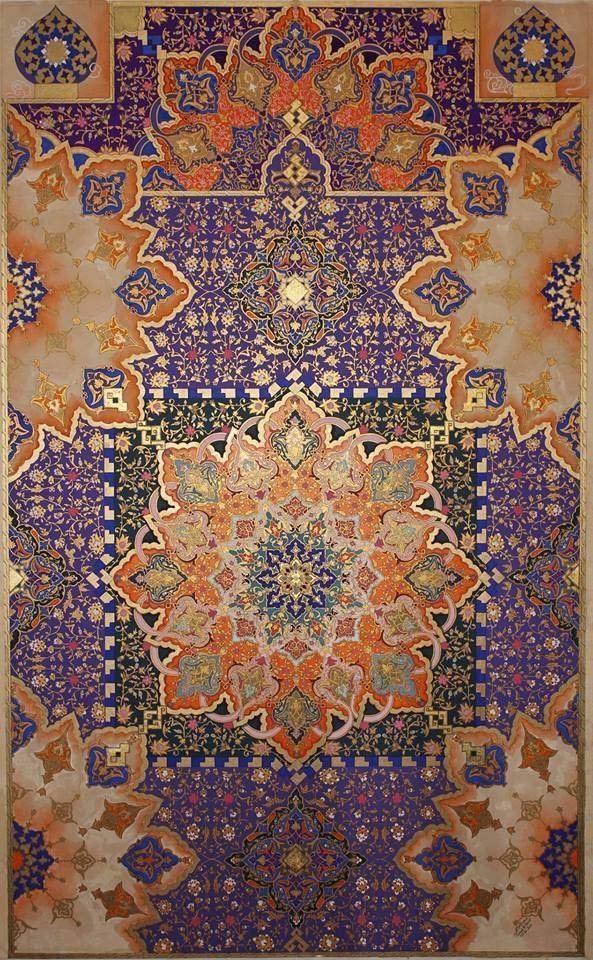
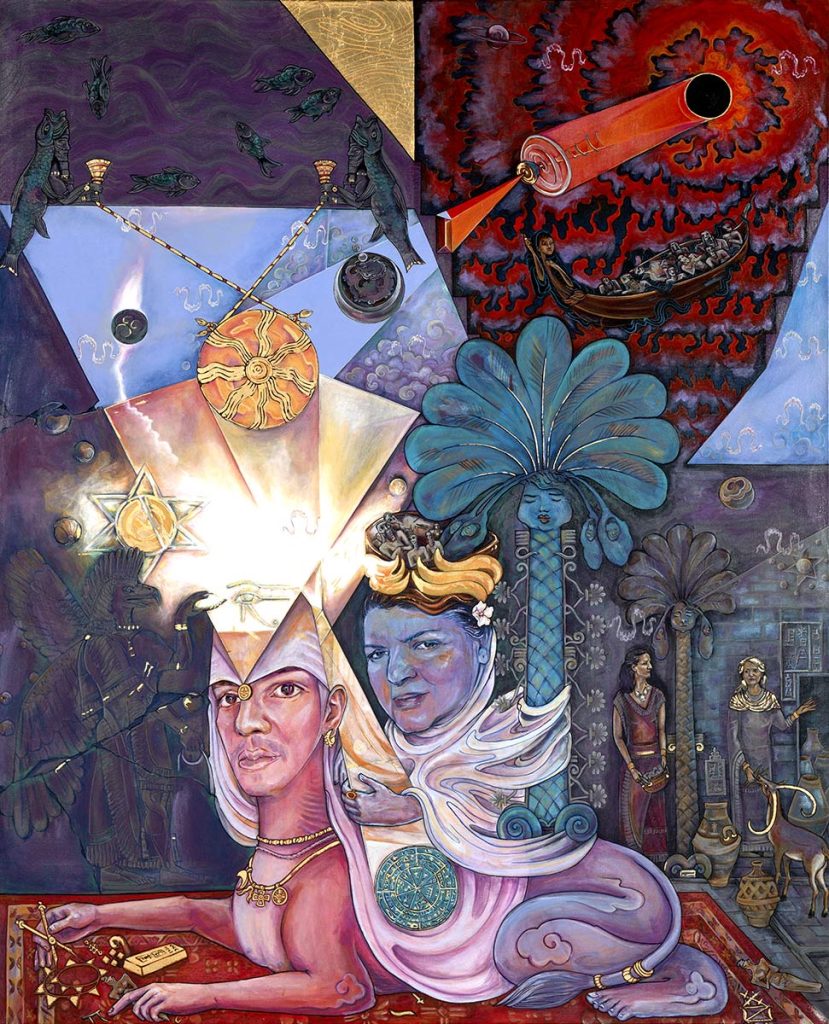
THE SHEIKH TAMIM PAINTING
I asked Diyar about his painting of the Emir, Sheikh Tamim bin Hamad Al Thani and the inspiration behind it: “There was a UN lecture in New York in 2016 and Sheikh Tamim was in attendance. It was there that I heard him discuss Qatar’s environment and sustainability goals and how the country was getting ready to host the FIFA World Cup Qatar 2022. I felt so inspired with everything he said. I thought it was beautiful that he was standing up for his country and he wanted to make it a better place to live, not just for him, but for the entire nation.
In 2020 Diyar sold some of his paintings in Qatar, it was then that he decided to also paint the Emir and the story of the World Cup: “My art isn’t about a portrait or an emotion. It doesn’t need a series of paintings to understand what it is about. You only need one painting, one masterpiece to look at and get lost in it. I want my work to be mesmerising.”
His stunning painting of the Emir took him four months to complete, working 14-hour days. The young artist said he wanted his work to mark the historic moment of the World Cup coming to Qatar: “The idea was to merge the theme of the World Cup and the Emir. So you see him standing in front of it, with an abaya wrapped around the trophy. You also see the famous Finar mosque and a falcon holding the Asian Cup which they [Qatar] won in 2019.”
Diyar said since he hadn’t been to Qatar at that point, he did a lot of reading and research to transcribe Qatar’s rich history onto canvas. A lot of his own feelings of what the Gulf state means to him are present in the painting: “You’ll see lots of orchids, they represent the Qatari women, to me they are the guardians of the water in the painting but also the guardians of life. There’s also a cherry blossom tree. I know they don’t grow here, but to me it represents beauty. You also see the sun and the solar system. To me that represents the world and how the entire world is coming to Qatar for the FIFA World Cup,” he explains.
The piece has since been sold for an undisclosed amount in America and allowed Diyar to help his family set up a trucking business and buy a house in Phoenix, Arizona. The painting has also led to more than 140 prints of the original being sold.
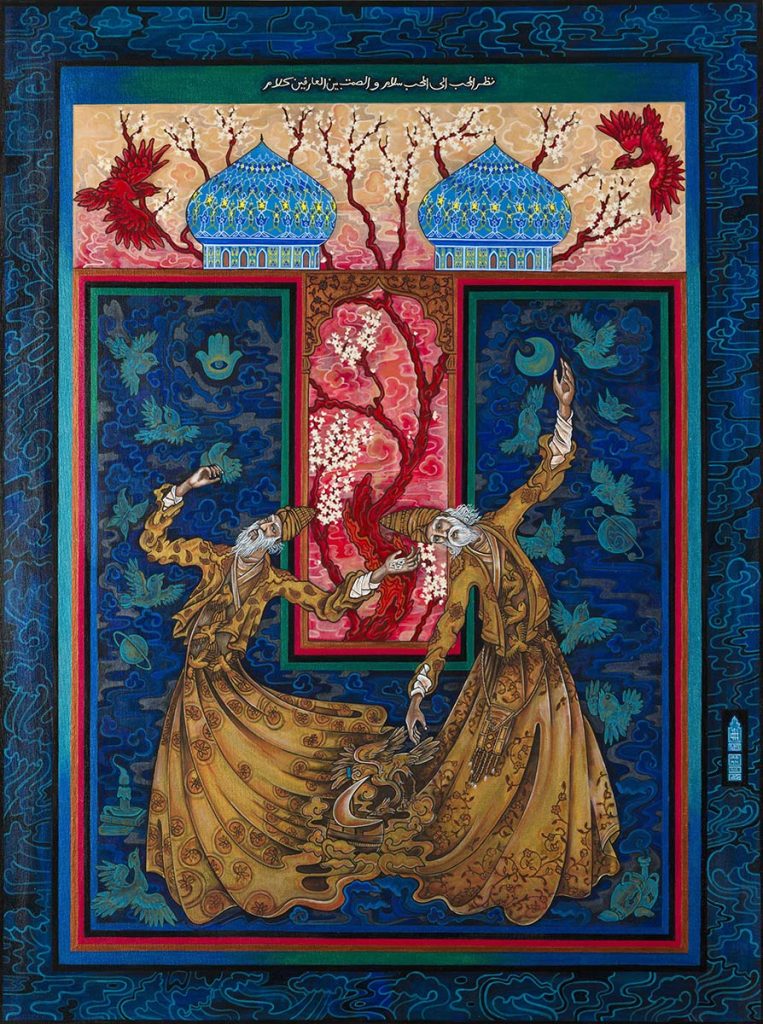
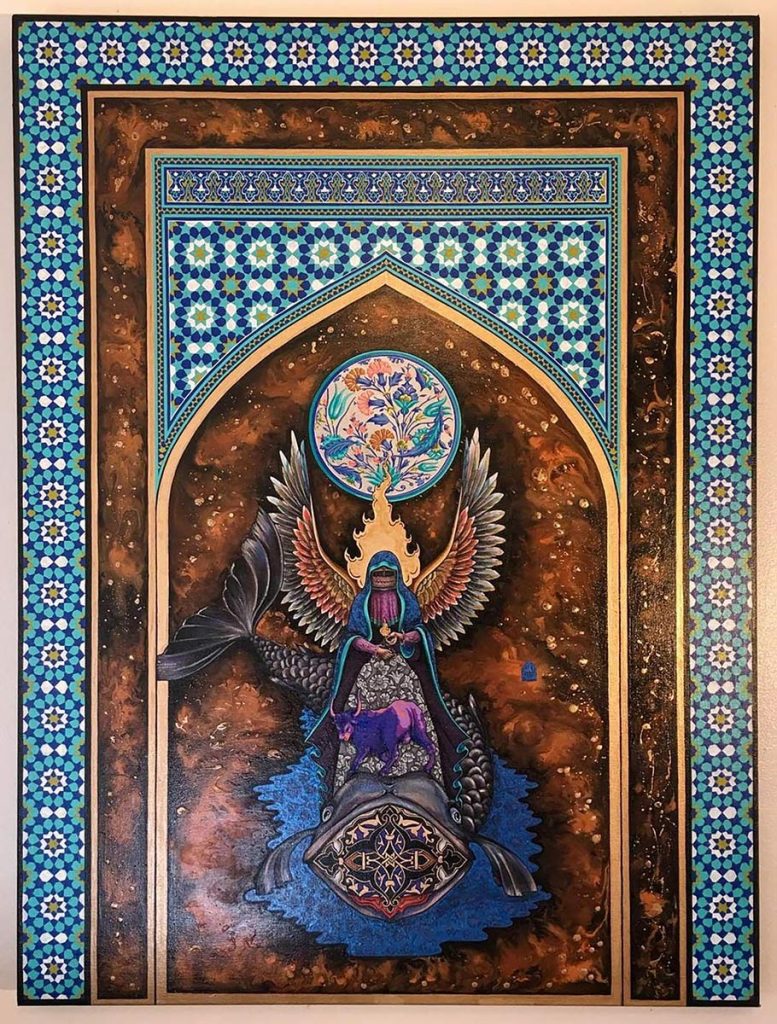
THE FUTURE IS BRIGHT
Diyar visited Qatar for the first time in August to deliver a painting to a client. He said it was cheaper than shipping and he was curious to visit Qatar, the country that had inspired his recent work. “I am turning 30 next year and I wanted to travel. I also wanted to explore the Middle East and, of course, visit Qatar. So, I decided to hand-deliver my painting and see Qatar at the same time.”
He smiles as he tells me he came for a two-week holiday but hasn’t been able to leave as he’s been inundated with requests: “I got a commission as soon as I arrived, in fact five paintings have already been ordered from five different clients. Each one takes about a month. People tell me what they want and I use my vision and creativity to tell their story. After all, I am a storyteller.”
Diyar is modest when it comes to his success despite there now being a year-long waiting list for his work. But it’s not just private collectors that were impressed with his talents. He’s been asked to work with a local firm to create cover books for them – which means he’s now been granted permanent residency to live in Qatar.
Diyar’s artistic journey is a heroic one and the refugee who began painting to help his family is now an acclaimed citizen of the world. ✤












